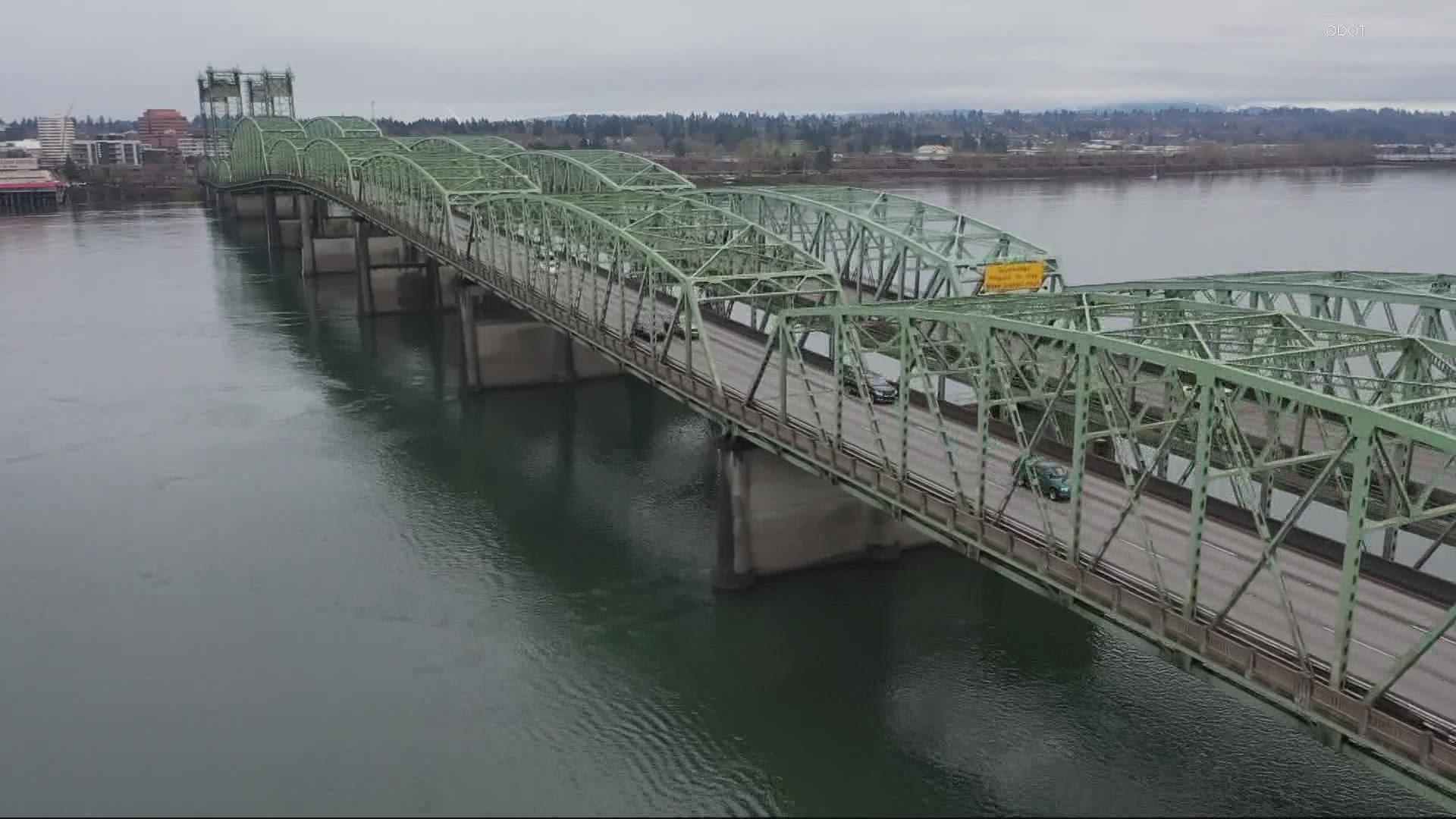VANCOUVER, Wash. — One of the biggest question marks about a planned replacement for the Interstate Bridge has been filled in. If everything goes the way the project office has planned, the new bridge will carry light rail over the Columbia River in addition to Interstate 5.
The new bridge must include some form of mass transit in order to qualify for full federal funding, but up until now the project office has been studying two options: light rail and Bus Rapid Transit (BRT), meaning buses running in their own reserved lanes.
Vancouver and Portland each have rapid transit systems, but they stop just short of linking up — TriMet's MAX Yellow Line terminates at the Portland Expo Center, and C-Tran's Vine BRT line terminates in downtown Vancouver — so the choice of transit mode for the bridge was essentially a choice of which line to extend across the river to connect with the other.
Light rail rationale
At a Thursday morning meeting of the project's Executive Steering Group, the project team revealed light rail as their recommendation, based on extensive studies and modeling of both options.
Both forms of mass transit would substantially improve service, the project team found, but modeling showed that the light rail version would have higher ridership and carrying capacity with the same alignment.
The need to transfer from the bus to the train at the Expo Center was part of why the BRT option showed lower ridership, the team found, because more riders would choose to take one of C-Tran's express route buses instead.
Light rail would also provide better job access and lower operational cost, the team concluded, although it would have a higher upfront construction cost.
In a separate interview, program administrator Greg Johnson said the addition of light rail also increases both the likelihood of the project winning federal funding and the amount of federal dollars it could potentially receive.
The decision to go with light rail follows in the footsteps of the Columbia River Crossing (CRC), the previous attempt to replace the Interstate Bridge that fell apart in the planning phase in 2014.
The CRC plan also called for light rail, although the IBR's recommendation switches to a more scaled-down alignment. The CRC plan would have run the Yellow Line through downtown Vancouver on city streets, terminating at Clark College. The new IBR recommendation is to keep the line adjacent to I-5 within Vancouver and only run it as far north as Evergreen Boulevard.
According to deputy IBR program administrator John Willis, the change reflects the addition of the Vine system to downtown Vancouver in the years since the CRC fell apart.
The first Vine line follows a route through downtown Vancouver that is similar to what the CRC light rail extension would have taken, and the second Vine line, currently under construction, will use a similar downtown alignment, so the team didn't want to duplicate the BRT service.
C-Tran CEO Shawn Donaghy voiced support for the new plan for the same reason.
Ending the line at Evergreen Boulevard, rather than further north on I-5, would minimize the property impact while still allowing the line to connect to downtown jobs and C-Tran routes, the project office concluded.
Next steps for the project
At this point, the IBR office has narrowed the selection process down to two scenarios, Willis said, both of which assume the bridge will carry light rail.
The scenarios differ in terms of the number of auxiliary traffic lanes that would be included with the new bridge and the design of the new interchanges at Hayden Island and Marine Drive on the Portland side of the river.


The final choice between those two options will be revealed at the next Executive Steering Group meeting on May 5, according to Johnson, and the chosen option will be used to develop a Locally Preferred Alternative for the project that will be submitted for environmental review.
The chosen configuration will also be subject to a public review process in the coming months, and it remains to be seen whether the light rail portion will garner more support this time around.
The Yellow Line extension was one of the most controversial parts of the CRC, and there were already signs on Thursday that the decision to choose it again for the IBR project was not universally well-received.
U.S. Rep. Jaime Herrera Beutler (R-Battle Ground) released a statement condemning the choice to rule out BRT from the final two options, and said the decision "flies in the face" of Southwest Washington voters who have rejected light rail in the past.
"For months I have been warning that this process was too closely reflecting the bungled 'Columbia River Crossing' failure that collapsed in large part because of its stubborn insistence on light rail, but somehow here we go again," she said.
The City of Vancouver, on the other hand, released a statement in support of the light rail option as a way to support future growth of the city and integrate the C-Tran and TriMet systems.
"For years, C-Tran has provided the sole cross-state transit service from Vancouver to downtown Portland. Integrating C-Tran’s express bus service across state lines with light rail across the river will create a complementary – yet not duplicative – option for transit users," Vancovuer mayor Anne McEnerny-Ogle said in a statement.

